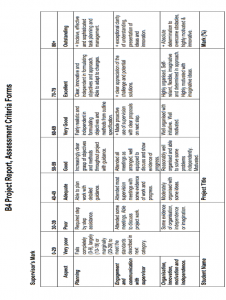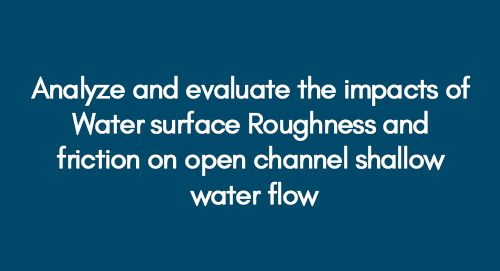
Products Analyses and Eco Redesign Strategy
January 28, 2021
Comparison of Timber and Steel Framed Buildings
January 28, 20211. Introduction
1.1 Research Aim
The aim of the present research is to analyze and evaluate the impacts of Water surface Roughness and friction on open channel shallow water flow. The basic models including local water depths, velocity profiles, bed scour, erosion and corrosion rates, sediment transport, scale formation and various hazard indices are analyzed.
1.2 Research questions
The primary research questions of the dissertation include:
- What are the possible hydraulic losses in an open channel?
- What would be the effect of obstacles on the fluid velocity profile and frequency of turbulence?
- What are the different methods to measure wave height at different velocities?
- How these frictional and hydraulic losses can be calculated through various dimensionless numbers?
- What are the protective measurements required to minimize the impacts of water surface roughness and other hydraulic losses?
2. Literature review
The secondary data would be the main source for literature review. Secondary data comprised of academic and commercial sources is also named as multiple source data. Which is further divided into time based and area based series of data. Our literature review would follow the following series of sources:
2.1 Area base
- Introduction to open channel shallow water flows
- Factors affecting the open channel water flow
- Various flow patterns, e.g. laminar, transient and turbulent and their structural characteristics
- Frictional hydraulic losses due to water surface roughness in open channel flow
2.2 Time based
- Reasons of the water surface roughness
- Possible impacts on the flow characteristics
- Applications of dimensionless numbers, e.g. Froude number to analyze the impact of gravity and inertia, Strouhal number to analyze the water profiles when fluid passes obstacle of known size and Darcy’s law to investigate the rates of friction occurred.
- Different methods to calculate wave height
Both of the series follow academic sources as well as commercial sources including
- Scholarly electronic database
- Electronic books
- Academic textbooks
- Online journals
- Magazines
3. Research methodology
3.1 Research approach
The aim of the project is to analyze the behavior of fluid flow under the effect of hydraulic losses, the objective or aim is not very general but requires a detailed research to investigate the problems and their remedies. An inductive research approach is required to reveal the important impacts of water surface roughness and analytical research approach is required to calculate the level of hydraulic loss.
3.2 Research methods and strategies
A multi-method study approach would be conducted in this dissertation. The multi-method research strategy would include the primary and secondary data collection approach. An inductive approach would be applied to structure the research findings and establish mathematical assumptions.
4. Findings
In this section a primary data would be presented which is extracted from the semi-structured part of the dissertation. It would involve qualitative analysis, analytical induction and mathematical calculations.
5. Discussion and conclusion
This research is based on various techniques to study the hydrodynamic performance of the waves that are incident on open channel shallow water flow. The hydraulic losses due to the water surface roughness are presented with various techniques and methods to calculate their major impacts. The dissertation is intended for application to normal flow conditions and to specify the important limitations to avoid undesired flow regimes.
6. List of references
Abbott, M.B. (1979), Computational hydraulics: elements of the theory of free surface flows, Pitman, London.
Beffa, C., and Connell, R.J. (2001), Two-dimensional Flood Plain Flow. J. Hydrologic Engineering, 6(5), 397–415.
Henderson, F. M. (1966), Open Channel Flow. Macmillan, New York.
Roux, H., and Dartus, D. (2008), Sensitivity Analysis and Predictive Uncertainty Using Inundation, Observations for Parameter Estimation in Open-Channel Inverse Problem, J. Hydraulic Engineering, 134(5), 541–549.

Get 3+ Free Dissertation Topics within 24 hours?

























